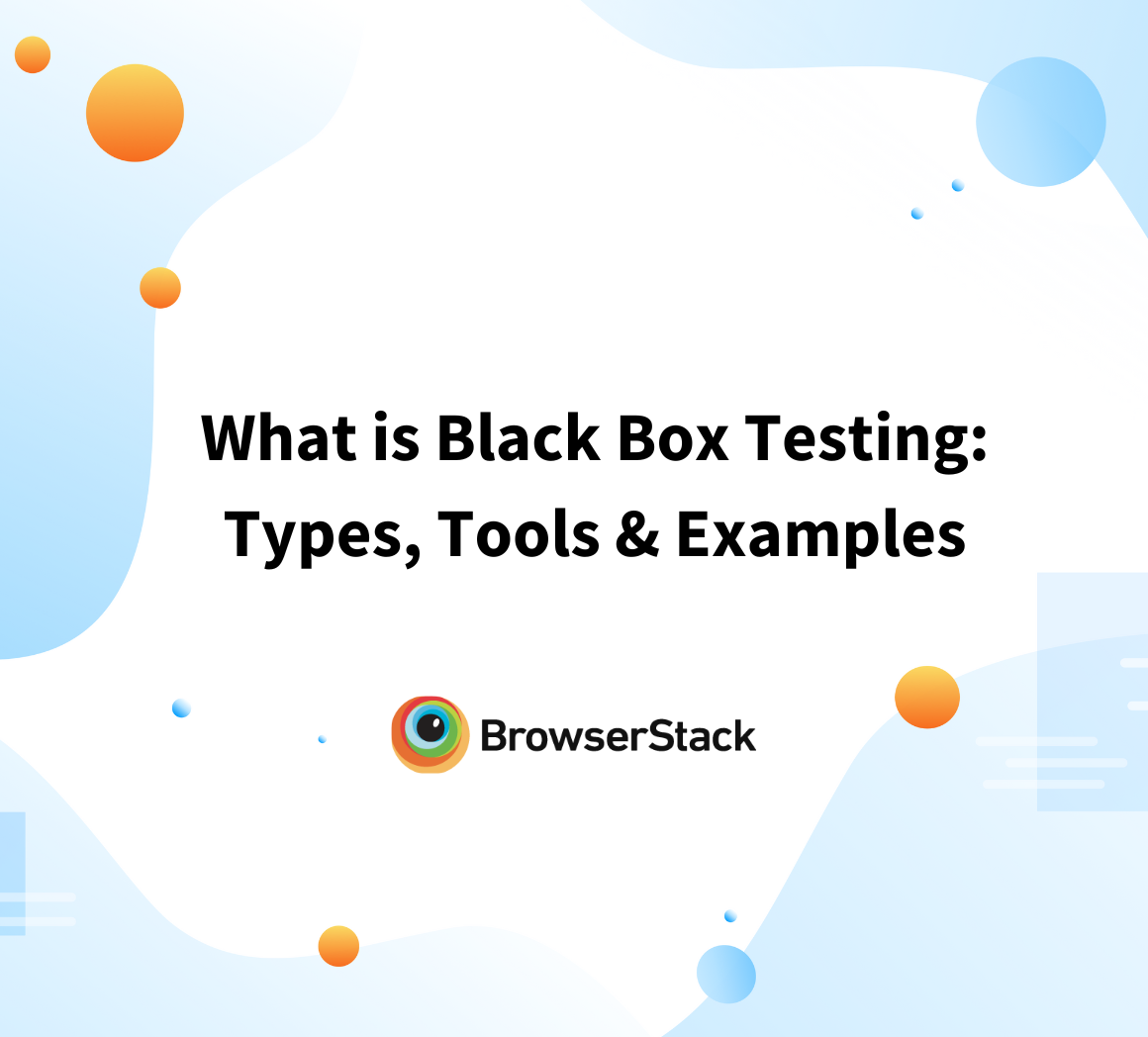Differences between Black Box Testing and White Box Testing
By Tom Collins, Community Contributor - August 10, 2024
Software testing is a mandatory part of its development process, and it is essential to produce standard quality software. The testing identifies bugs, removes them, and improves the overall quality of your software. The procedure follows some common techniques to test your software. Black box testing and white box testing among the types of testing that widely used.
- Black box testing checks the accuracy of your system without too much concern about the internal implementations. It identifies the interface-level bugs and resolves them.
- White box testing deeply scrutinizes and analyzes your system by checking its internal coding. So, it helps you to find bugs from the design level, re-construct, run and execute them. In this way, it eliminates the bugs from your system.
- Grey box testing combines both Black Box and Whit Box Approach for a thorough testing of application keeping in mind internal structure and user behaviour.
What is Black Box Testing?
Black box testing is a software testing technique where testers evaluate the functionality of an application without any knowledge of its internal code or structure.
The primary focus of black box testing is to examine the software’s outputs in response to various inputs, ensuring that it behaves as expected according to its requirements and specifications.
In black box testing, the tester focuses solely on the external behaviour of the software, without having access to its internal source code. The name “black box” comes from the idea that the internal workings are hidden or “boxed” from the tester’s view.
Types of Black Box Testing
Different types of Black Box Testing are:
- Functional Testing
- Non-Functional Testing
- Regression Testing
- UI Testing
- Usability Testing
- Ad-hoc Testing
- Compatibility Testing
- Penetration Testing
- Security Testing
- Localization and Internationalization Testing
What is White Box Testing?
White box testing, or glass box testing, is a software testing technique that focuses on the software’s internal logic, structure, and coding. It provides testers with complete application knowledge, including access to source code and design documents. This enables the testers to inspect and verify the software’s inner workings, infrastructure, and integrations.
Test cases are designed using an internal system perspective, and the methodology assumes explicit knowledge of the software’s internal structure and implementation details. This in-depth access allows White Box Testing to identify issues that may be invisible to other testing methods.
Types of White Box Testing
Different types of White Box Testing are:
- Unit Testing
- Static Code Analysis
- Dynamic Code Analysis
- Statement Coverage
- Branch Testing
- Path Testing
- Loop Testing
What is Grey Box Testing?
Grey Box Testing is a software testing technique that blends elements of both black box and white box testing. It involves partial knowledge of the internal workings of the application combined with an emphasis on testing functionality from an end-user perspective.
Testers use this partial insight to design test cases that focus on the integration points and interactions between components, while also validating system behaviour against functional requirements.
Grey Box Testing approach helps identify issues that may arise from both the internal code structure and the external user interface, making it particularly useful for integration and security testing.
Types of Grey Box Testing
Different types of Grey Box Testing are:
- Integration Testing
- Penetration Testing
- User Acceptance Testing (UAT)
- Security Testing
- API Testing
- Performance Testing
- System Testing
- Data-Driven Testing
Difference between Black Box, White Box Testing and Grey Box Testing
The core difference between black box, white box, and grey box testing can be seen in the table below:
| Parameter | Black Box | White Box | Grey Box |
|---|---|---|---|
| Definition | Testing without knowledge of the internal code structure; focuses on inputs and outputs. | Testing with knowledge of the internal code structure; focuses on logic, paths, and structures. | A combination of black box and white box testing; involves some knowledge of the internal workings but focuses on functionality. |
| Focus | Functionality and user requirements. | Internal logic, code structure, and pathways. | Functionality and internal design, focusing on both the end-user perspective and internal processes. |
| Knowledge Required | No knowledge of the internal code or system architecture. | Detailed knowledge of the internal code and system architecture. | Partial knowledge of the internal code or architecture. |
| Test Basis | Requirements, specifications, and user scenarios. | Source code, algorithms, and internal logic. | Requirements, specifications, and a partial understanding of the code. |
| Types of Tests | Functional testing, system testing, acceptance testing. | Unit testing, integration testing, and code coverage analysis. | Integration testing, security testing, and system testing. |
| Testing Scope | Broad, focusing on overall system functionality. | Narrower, focusing on specific code paths and logic. | Mid-level, focusing on both functional and structural aspects. |
| Test Design | Test cases derived from functional requirements and user stories. | Test cases derived from code and design documents. | Test cases based on functional requirements and some knowledge of the system’s internal workings. |
| Tools Used | Test management tools, and functional testing tools. | Debuggers, code analysis tools, and unit testing frameworks. | Functional and security testing tools, along with some code analysis tools. |
Conclusion
Black Box Testing, White Box Testing, and Grey Box Testing are distinct approaches to software testing, each with its own focus, advantages, and methodologies.
While Black box testing focuses solely on evaluating an application’s functionality from an end-user perspective, without any knowledge of its internal code or structure, making it ideal for validating whether the software meets its requirements.
White box testing, on the other hand, involves an in-depth examination of the internal code and logic, allowing testers to assess code correctness, internal paths, and potential inefficiencies, but it may not fully reflect real-world usage scenarios.
Grey box testing combines elements of both approaches, leveraging partial knowledge of the internal workings alongside external functionality testing to provide a balanced view, particularly useful for identifying integration issues and security vulnerabilities while still considering user perspectives and functional requirements.
Each testing approach has its strengths and is often used in conjunction with others to provide comprehensive test coverage.
It is important to use the right testing tools like BrowserStack to perform Black Box, White Box and Grey Box Testing seamlessly.



